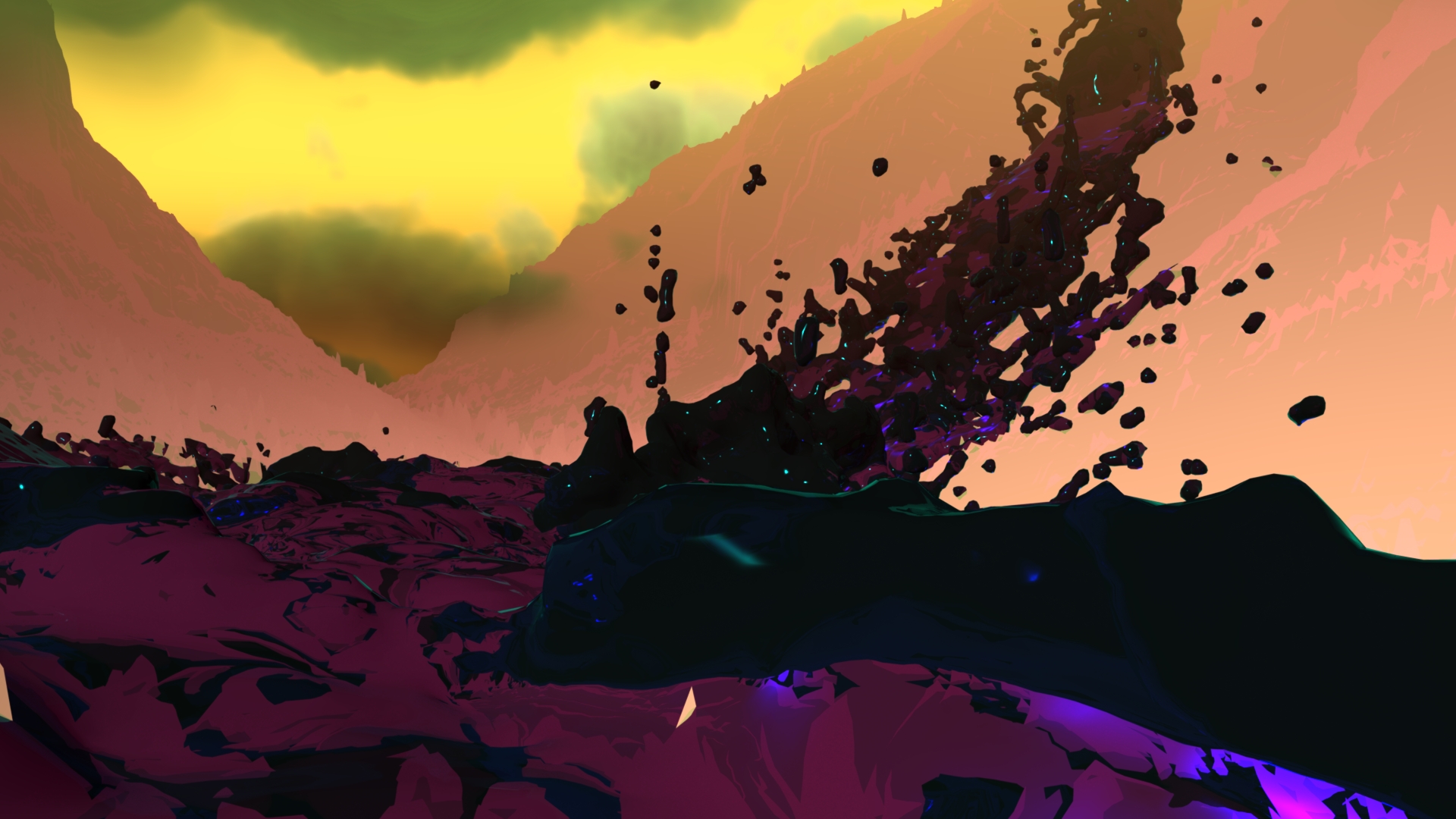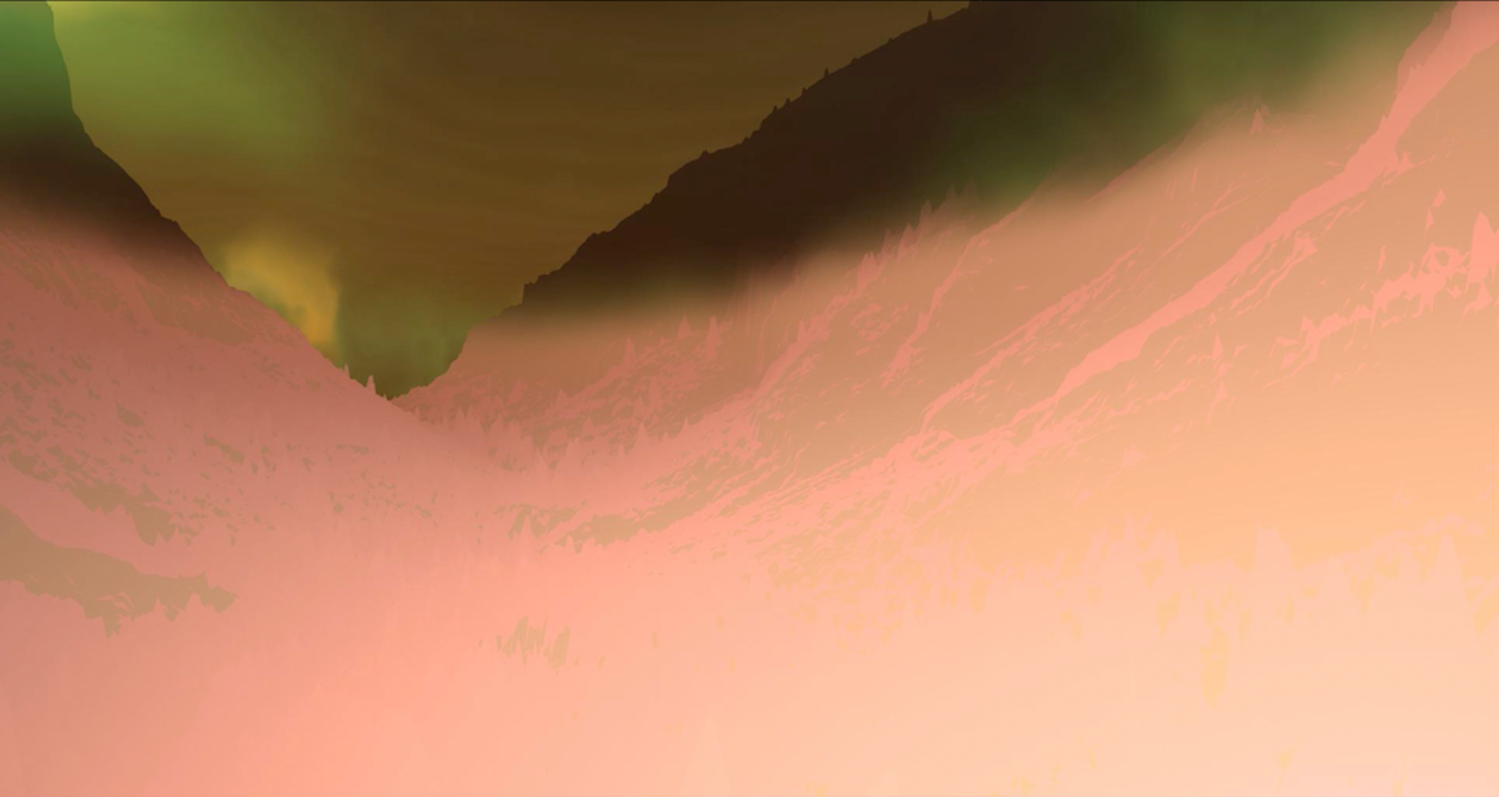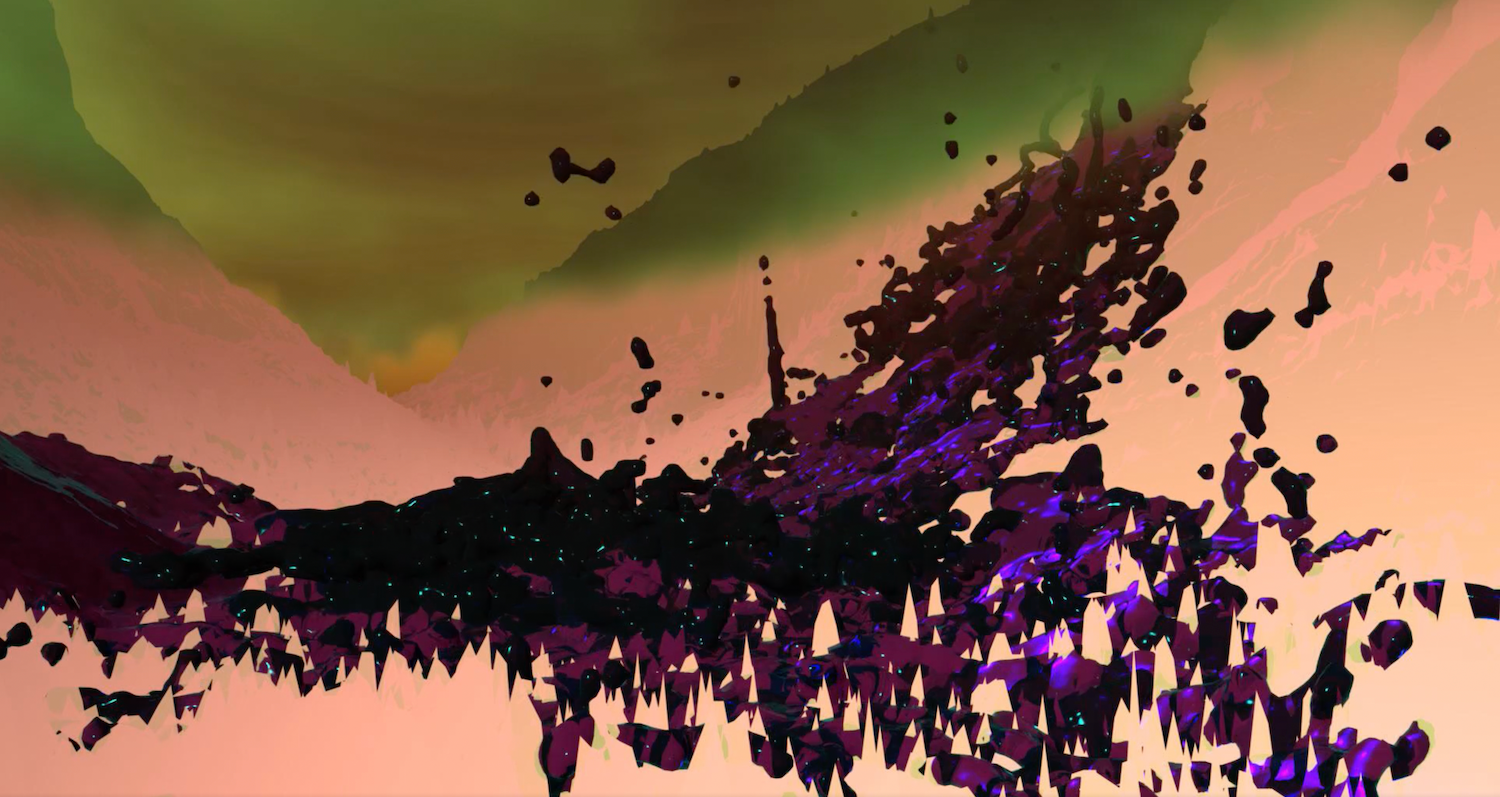“The naturalistic compositions tie visually to landscape paintings, both Chinese and Western, play on perception and desire for a relationship with nature, yet it is synthetic, a liminal realm that we experience but cannot touch.”
––Snow Yunxue Fu

Digital artist and professor Snow Yunxue Fu creates 3D moving images with CG technology and virtual photography. Borrowing from Chinese and Western landscape paintings, Fu depicts familiar natural compositions of sweeping clouds, rocky mountains and flowing water. The images, although familiar, are saturated with digital hues pulled directly from the RGB scale and rely on post-photographic techniques, like uneven cropping, to build intrigue among the images.
Fu’s recent NFT series, “Gorges” illustrates that nature can exist in multitudes outside of the physical world by applying digital software and photographic manipulation to common images, like landscapes, that represent it.
Clouds Study 3 typifies a vigorous effort by the artist to craft various forms of nature unique from the natural world. With a run time of 43 seconds, the video opens to a misty landscape depicting an overcast sky and tall, jagged mountains. A deep valley cuts through the patchy, green clouds, and, as they inch toward the foreground, a cluster of pink translucent mountains are rendered like intaglio in copper plates.
The wispy clouds in the background rumble across the sky like ripples in river water. The subtle allusions to nature create an inviting effect within this type of 3D image. Then, rather abruptly, thick droplets pour down into the valley from the left side of the image. The droplets – a purplish fountain ink color – began as a trickle, but are then followed by streams flowing from both sides of the mountain from the top. It floods the foreground and the splashes of water have such visual presence that they are loud. This unnatural inky water moving quickly against the airbrushed backdrop gives the scene a bizarre dreamlike quality.
Further, Fu embeds the pixels irregularly into the image, particularly in applying the water and mountains. The top of the mountains favor ripped paper, and, along the mountainside, iridescent pink etchings among ombré green-to-pink ridges resemble faint carvings in wood. As water pours down and through the bedrock, parts of the mountain peek out from the water against physics, and once the liquid settles into the basin, uneven triangles pixelate and break up the flow of the water.
Although visually legible as a landscape, the scene relies on the inelegant handiwork in the composition to expose its artificial nature. Each marking and form shows the effort as the artist intended. The final moving image reads as photographs collaged together to portray a true imitation, not a replica, of nature.


The familiar imagery portrayed enigmatically with unnatural colors and perspective invites the viewer to get lost in the composition. The visual juxtaposition not only creates a mysterious, dreamy effect but it also reinforces the concept of reproduced nature or of manufacturing many natures as a haven from the natural world.
The hearty number of studies in this NFT series suggests that, like traditional landscape paintings, images of nature can be exhaustively explored through digital appropriation and photographic manipulation. Because nature can be only reproduced, Fu contends that copies of nature can be fully enjoyed regardless of their artificiality, and, therefore, they capture the “experience of the digital sublime” as characterized by the artist. “Gorges” allows the viewer to inhabit a synthetic nature as the natural world becomes increasingly inaccessible.